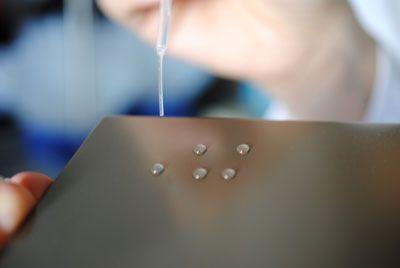Three coatings for surface finishing
- Details
- Hits: 5933
 With the "sol-gel" coatings of its new "Cercoat" product line, WZR Ceramic Solutions can specifically optimize the surface quality of metallic, glass and polymer workpieces and semi-finished products. The range of properties that can be achieved is enormous, since the coatings, which are available in three groups, can be modified in many ways. Manufacturers, developers and suppliers are thus offered considerable potential for improvement in terms of surface technology.
With the "sol-gel" coatings of its new "Cercoat" product line, WZR Ceramic Solutions can specifically optimize the surface quality of metallic, glass and polymer workpieces and semi-finished products. The range of properties that can be achieved is enormous, since the coatings, which are available in three groups, can be modified in many ways. Manufacturers, developers and suppliers are thus offered considerable potential for improvement in terms of surface technology.
Cercoat and consists of three different types of sol-gel coatings, which give the workpieces and semi-finished products significant functional and qualitative optimizations. For example, metallic surfaces receive higher wear protection, improved wetting properties or electrical insulation. The coatings are therefore suitable for refining components for general mechanical engineering, electrical engineering, chemical and process engineering, medical technology, the food industry and many other fields of application.
Cercoat-H is the transparent thin layer (<1 µm), the main task of which is to provide surfaces with a higher degree of hardness. The degree of hardness can be variably adjusted depending on the requirements and makes the components treated in an immersion and tempering process insensitive to scratches and scrapes. An ideal improvement for all products that are used in harsh environments and must be dishwasher safe. At the same time, the surfaces coated with Cercoat-H have a high resistance to solvents, which makes them suitable for many industrial cleaning processes. Cercoat-H is suitable as a coating for stainless steel and steel as well as for aluminum and glass. Even technical plastics such as pee classes are coated with it.
The second, likewise transparent product Cercoat-Y is a coating with hydrophobic properties. It is particularly environmentally friendly because it does not require fluorine modification. With their help, for example, in plastic injection molding, the undesired adhesion of the plastic melt in the injection mold can be minimized. Cercoat-Y can be applied by dip-coating or spray-coating. The latter offers the advantage that even components with very complex geometries can be coated without problems. Also, this sol-gel thin film proves to be very resistant to chemicals and solvents in practice.
The third coating is called Cercoat-P and is a sol enriched with ceramic particles. Both the surface structure and the layer thickness (> 80 µm) can be adapted to the application. Compared to particle-free coatings, Cercoat-P offers even higher wear resistance and a second major advantage: high electrical insulation (dielectric strength). In addition, these coatings can also be made hydrophobic and can also be applied transparently or in color. They are suitable for application on steel, stainless steel, copper, aluminum, glass and peek.
